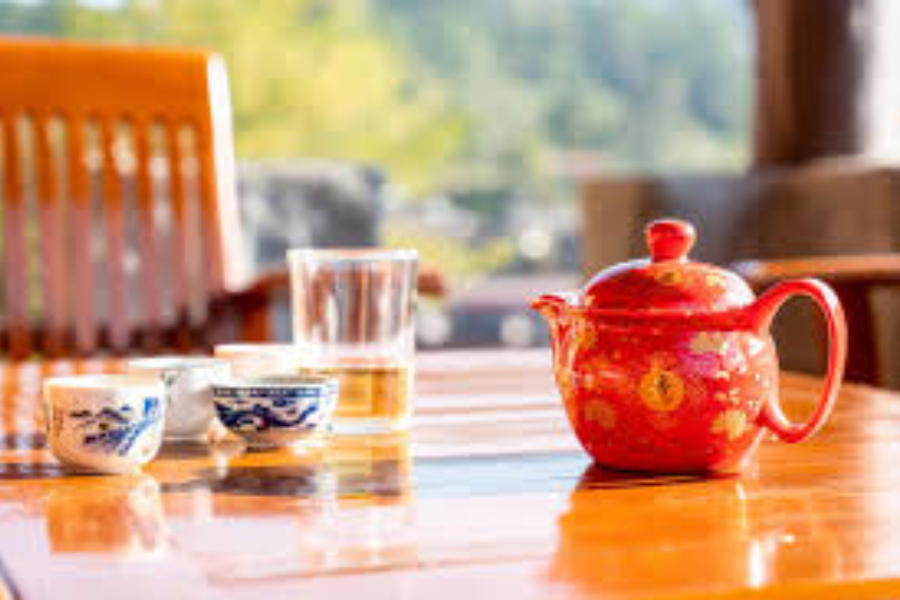Exploring the Most Popular Teas Served with Chinese Cuisine
Walk into almost any Chinese restaurant, from a humble dim sum parlor to an upscale Sichuan establishment, and you’ll likely be greeted with a warm pot of tea. This welcoming gesture is more than just tradition—it’s a reflection of thousands of years of Chinese tea culture.But many diners wonder: What is the tea used in Chinese restaurants? Why does it taste so distinct, and what are its health benefits?
In this in-depth article, we’ll explore the types of tea typically served in Chinese restaurants, why they’re chosen, what makes each one unique, and how you can enjoy the same experience at home. Whether you’re a tea enthusiast or a curious diner, you’ll discover the cultural and culinary significance behind that fragrant pot of Chinese tea.
1. Why Tea Is Served in Chinese Restaurants

Before diving into the specific types, it’s helpful to understand why tea is such a central part of Chinese dining.
Tea serves multiple functions in a meal:
- A digestive aid: Hot tea helps to cleanse the palate and aids digestion, especially with oily or rich dishes.
- Cultural respect: Serving tea to guests is a sign of hospitality in Chinese culture.
- A balancing agent: Traditional Chinese Medicine (TCM) views tea as a way to balance “yin” and “yang” in the body—particularly when eating fried or spicy food.
- Conversation starter: Sharing tea around the table is a ritual that fosters connection and sets the tone for a communal meal.
Now that we’ve seen the role tea plays, let’s get into the specific types of tea commonly served in Chinese restaurants.
2. The Most Popular Tea Varieties in Chinese Dining Establishments
a. Jasmine Tea (茉莉花茶
Most common in Cantonese and dim sum restaurants
If you’ve eaten dim sum or dined at a Cantonese-style Chinese restaurant, you’ve likely had jasmine tea. It’s a green tea base infused with jasmine flowers, giving it a fragrant, floral aroma.
Flavor profile: Light, aromatic, slightly sweet with grassy undertones.
Why it’s used: Jasmine tea complements delicate dishes like dumplings, steamed seafood, and rice noodles without overpowering them.
Health benefits:
- Rich in antioxidants
- May promote relaxation
- Aids digestion
Common in Fujian, Taiwanese, and Sichuan restaurants
Oolong tea is partially fermented, sitting between green and black tea in terms of oxidationRestaurants favor it for its complexity and versatility
Why it’s used: Oolong can cut through the richness of meats and spicy dishes, making it ideal for Sichuan cuisine.
Health benefits:
- May aid in fat metabolism
- Supports heart health
- Reduces inflammation
Popular in southern Chinese restaurants, especially Yunnan cuisine
Pu-erh is a fermented tea with a deep, earthy flavor. It’s aged, sometimes for years, to develop its distinctive profile.
Flavor profile: Earthy, woody, mellow, and slightly sweet.
Why it’s used: It’s often served after meals to aid digestion, especially after consuming rich meats or fatty foods.
Health benefits:
- Known for reducing cholesterol
- Aids weight loss
- Detoxifying effects
d. Chrysanthemum Tea (菊花茶)
Served in herbal-focused or health-oriented restaurants
Though technically a tisane (herbal infusion) rather than true tea, chrysanthemum tea is a traditional favorite.
Flavor profile: Light, floral, subtly sweet with a cooling effect.
Why it’s used: Often served with rock sugar, chrysanthemum tea is believed to have a “cooling” nature in TCM, balancing out spicy or “hot” dishes.
Health benefits:
- Reduces internal heat
- Good for eyesight
- Eases sore throats and stress
e. Boiled Tea (Bo Lei 茶 or Heung Pin 茶)
Sometimes a restaurant blend of black and oolong teas
Some restaurants, particularly in Hong Kong, serve a house blend that may include fermented black tea and oolong. These blends are boiled for long periods to develop a stronger flavor.
Flavor profile: Dark, toasty, bitter-sweet.
Why it’s used: Pairs well with fatty foods like roast duck, pork belly, and deep-fried dishes.
3. Regional Tea Preferences in Chinese Restaurants
China is a massive country, and different regions serve tea according to local preferences:
- Cantonese (Guangdong): Jasmine and chrysanthemum tea dominate, often served during dim sum.
- Sichuan/Hunan: Oolong or darker teas like pu-erh to balance spicy food.
- Northern China (Beijing): Green tea such as Longjing (Dragon Well) may be offered.
- Yunnan cuisine: Pu-erh tea is a regional staple.
In Chinese-American restaurants, jasmine tea and generic oolong are most common, as they’re both accessible and universally appealing.
4. How Tea Is Served in Chinese Restaurants
The tea experience in Chinese restaurants is simple but rooted in custom:
- With small porcelain cups: Meant to encourage sipping and sharing.
- Hot water refills: It’s customary to request a hot water refill by flipping the teapot lid.
Some upscale establishments serve Gong Fu-style tea service, where tea is steeped multiple times in tiny clay pots to extract maximum flavor.
5. Etiquette and Tea Customs at the Table
Tea isn’t just a drink—it’s a part of Chinese dining etiquette. Here are a few customs you might see:
- Tapping fingers: When someone pours tea for you, you tap your index and middle fingers on the table to say thank you. This gesture mimics bowing.
- Pouring for others first: It’s polite to pour tea for elders or guests before filling your own cup.
- Never let cups go empty: In Chinese culture, a full teacup is a sign of care and attentiveness.
These gestures may seem small, but they reflect deeper values of respect, hospitality, and community.
6. How to Recreate Chinese Restaurant Tea at Home
Want to replicate the experience at home? Here’s what you’ll need:
a. Choose the Right Tea
- Jasmine Pearls or Loose-leaf Jasmine Green Tea
- Tie Guan Yin (Iron Goddess) for oolong
- Shou Pu-erh Cake (ripe pu-erh)
- Chrysanthemum Blossoms (dried flowers)
b. Brew Properly
- Water temperature is key:
- Green/jasmine tea: ~175°F (80°C)
- Oolong tea: ~195°F (90°C)
- Pu-erh: boiling (~212°F or 100°C)
- Green/jasmine tea: ~175°F (80°C)
- Steep time: 1–3 minutes depending on the tea
Use a ceramic teapot or glass teapot with a built-in infuser. Serve in small cups, refill as needed, and sip slowly.
7. Health Benefits of Chinese Restaurant Teas
The teas served in Chinese restaurants aren’t just tasty—they’re good for you too. Many have been used in Traditional Chinese Medicine (TCM) for centuries. Here are some general benefits:
- Improved digestion: Particularly oolong and pu-erh
- Heart health: Green and oolong teas may reduce LDL cholesterol
- Weight management: Some teas boost metabolism
- Mental alertness: Mild caffeine improves focus without jitters
- Anti-inflammatory: Rich in polyphenols and antioxidants
Of course, it’s important to consume tea in moderation, especially if you’re sensitive to caffeine.
8. What About Tea Bags in Chinese Restaurants?

Not all restaurants use loose-leaf tea. Some opt for tea bags for convenience, especially in fast-casual or buffet settings. These usually contain:
- Generic jasmine green tea
- Oolong blends
- Black tea with floral notes
Loose-leaf tea, however, tends to offer a superior flavor and aroma, especially in more authentic or high-end establishments.
9. Is There Caffeine in Chinese Restaurant Tea?
Yes, but it varies:
- Green tea (including jasmine): 20–35 mg per cup
- Oolong tea: 30–45 mg per cup
- Pu-erh tea: 30–70 mg per cup
- Chrysanthemum tea: 0 mg (caffeine-free)
The caffeine levels are much lower than in coffee (which averages 95 mg per cup), so they’re suitable for most people—even in the evening.
10. Conclusion: More Than Just a Beverage
So, what is the tea used in Chinese restaurants? It’s more than just a warm drink. It’s an invitation to relax, a nod to centuries of culture, and a way to enhance your meal in both flavor and function. From the delicate aroma of jasmine to the earthy depth of pu-erh, each cup carries history, tradition, and health.
Next time you sit down at your favorite Chinese restaurant, don’t take that little pot of tea for granted. Sip slowly, enjoy the moment, and appreciate the deep-rooted tradition that’s been poured into your cup.
Dive into trending stories and entertainment updates at Newsdraz.com.



